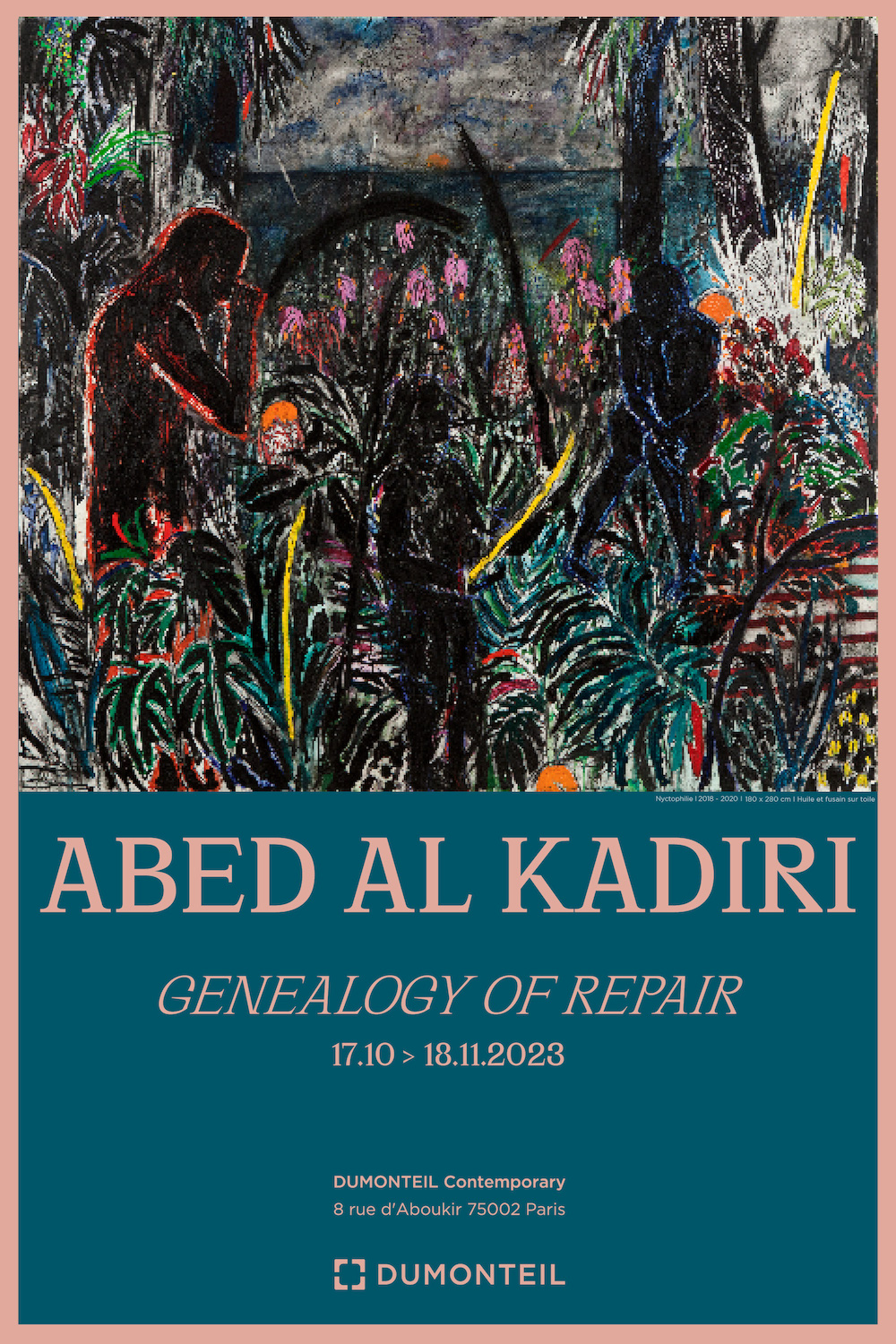In his first solo show in France at Dumonteil Contemporary, multidisciplinary artist Abed Al Kadiri (b. 1984, Beirut, based in Paris) invites us to explore a very personal selection of works from the last five years. Highly autobiographical in nature, these works bridge and connect two cities: Beirut and Paris. Abed moved to Paris in 2021 just a few months after the Beirut port blast. These works, which stem from a need to translate violence and investigate repressed personal and collective traumatic experiences, explore feelings of fragility and destruction and the relationship between nature, isolation, and loss. At the same time, they dive into the destruction of cultural heritage, migration, and belonging, while representing an emergence from the darkness of the pandemic and the aftermath of the explosion.
While the years since have been oppressive—whether as a result of the pain following the explosion, the conditions during the worst of the pandemic, or because of the ongoing economic and political situation in Lebanon, the observant viewer will notice a motif of grounding and yearning. Almost subconsciously, many of these works rely on the image of a tree to weave together a narrative of optimism and growth. As the growth rings at a tree’s core, Al Kadiri’s work unreels stories that position the tree as a witness and narrator of a society in perpetual collapse.
This exhibition revels in the metaphor of the tree and presents it in different modes:
In The Story of the Rubber Tree, made in 2016 and 2018, Al Kadiri examines abandoned houses in Beirut that have been “reinhabited” by rubber trees. Once planted to provide shade in the gardens of city houses, rubber trees have become unwieldy in the absence of care, undermining the foundations of the houses that they now occupy. These large-scale paintings are done entirely in pencil—erasable by the very material sourced from the tree. The juxtaposing sculpture and videos trace not only the complex familial narratives and memories of civil war that the trees bear witness to but also reveal their capacity to bring both life and ruin.
If the world is a dark place, Lebanon is its epicentre. With this sentence, Al Kadiri introduced his series Nyctophilia, in 2020. Dwindling fuel, silenced generators, an economy in free fall, the street all but abandoned as a site of revolt. These paintings made in 2018 and 2019 are neither a literal reaction to the prevailing gloom, nor some flourish of introspection: They ask us to confront and reflect. Driven by insomnia, anxiety, and disorientation during the one year of the paintings’ creation, Al Kadiri came not only to explore the colour black but also to indulge in its transformative promise of oblivion. A week after showing this series in an exhibition titled Remains of the Last Red Rose, the largest non-nuclear explosion ever strikes Beirut close to the gallery showing these works, destroying the venue and encasing the paintings beneath the rubble. closing them off from the world until they could be salvaged. In the shadows, the artist searches for that place of melancholy and ecstasy in which his inner child finds consolation and peace despite the darkness around him.
In a rebuke to the destruction, Today I Would Like to Be a Tree (2020) was conceived. It comes as a constructive act in the face of the stifling hold of Lebanon’s economic and political situation, and the aftereffects of the Beirut blast. Observing the pain surrounding him, the artist had a recurring thought: “I want to be a tree.” The tree is an alternative, perhaps even an antidote. It protects, although shaken by ravages. Its roots embrace the earth from which it has sprung, in a reciprocal grip of life force. This landscape transfigured the walls of Galerie Tanit—the very walls obliterated by the explosion. The gallery, now a violent, open space, hosted the creation of two murals painted over eighty panels. A landscape of trees, serene and unflinching, stands as a counterforce to the conquering shocks that wrought havoc. The tree endures and by enduring, heals. This project started as a direct response to the August 4th explosion with the aim to raise funds for the reconstruction and rehabilitation of Beirut homes.
Bois des Vincennes, made between 2021 and 2022, is the most recent series of paintings on display here. These works are born from the artist’s lockdown-era walks through the parks and forests of Paris, while Al Kadiri completed a one-year residency at Cité International des arts, Paris. Exploring the woods with all it has to offer from gratitude to inner peace, the paintings represent the artist’s attempt to cleanse himself of the trauma of the recent past.
It is fitting that this exhibition is happening in Paris, the city Abed Al Kadiri exiled himself to four months after the explosion, where, in the forced isolation of the pandemic, he tried to heal. These projects act as a counter-statement while respecting and grieving what was lost during the devastation of the last few years. It is the end of a healing process, the acceptance of loss and death, and—most importantly—a natural resurrection and celebration of rebirth.
